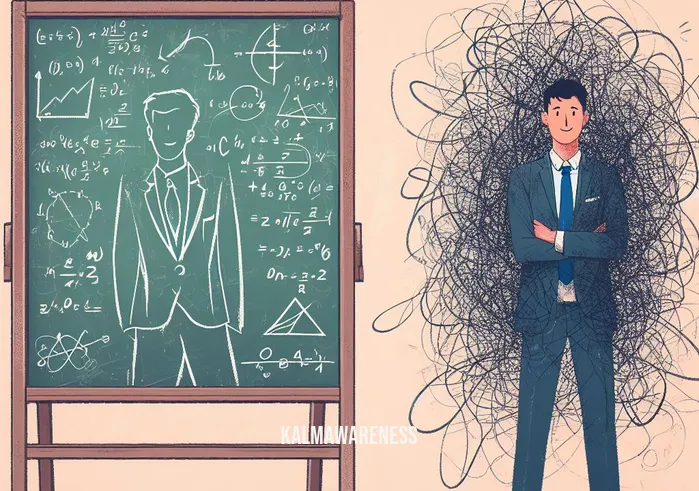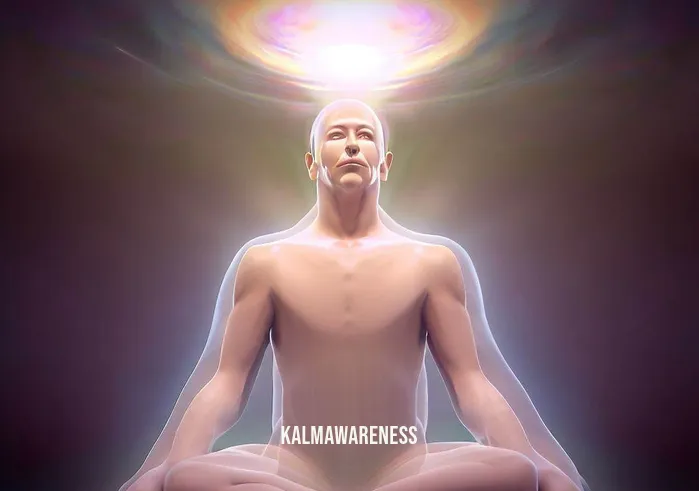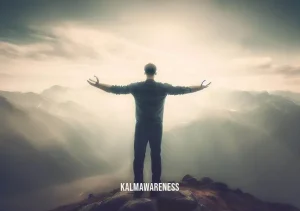The Intricate Art of the Meditation Symbol: A Guide to Spiritual and Mindful Enlightenment
Meditation is not just a practice, but a journey into the depths of our own consciousness. For centuries, meditation has been utilized to attain peace, mindfulness, and spiritual growth. At the heart of this serene practice lies the profound concept of the meditation symbol. While the act of meditating often leans heavily on our mental and spiritual capacities, the role of visualization, often led by symbols, cannot be denied. As we embark on this journey, let’s delve deep into the world of the meditation symbol, its relevance in spirituality, mindfulness, and how it acts as a guiding beacon towards relaxation and profound inner peace.
Understanding the Meditation Symbol
A meditation symbol serves as an anchor, a focal point to aid the practitioner in channeling their energy and concentration. Throughout the ages, various cultures and traditions have harnessed the power of symbols in their spiritual practices. For instance, ancient African rituals incorporated intricate ancient African meditation techniques, where symbols played a significant role in connecting with the divine and the self.
Symbols aren’t just about representation; they encompass meanings that go beyond the visual element. They serve as a bridge, linking the tangible world with the intangible realms of the mind and spirit. These symbols, when internalized and visualized during meditation, act as catalysts, enhancing our mindful muscle, a concept aptly explored in this article.
Mindfulness and the Power of the Present
One might wonder, why symbols? Why not just focus on breath or thoughts? Well, as highlighted by the phrase “life is available only in the present moment“, mindfulness is about anchoring oneself in the ‘now’. And for many, symbols provide that anchor. They pull the mind back when it wanders into the maze of habitual thinking, a phenomenon detailed here.
Moreover, symbols aren’t just static; they evolve. Think of them as stories or narratives that play out in our minds. For students and young individuals, these narratives become essential, as they can resonate with meditation stories for students or even find solace in mindfulness books for teens.
Meditation in Various Forms
While seated meditation with symbols is quite prevalent, there are other dynamic forms worth exploring. Meditation in motion, for instance, integrates physical movement with mindful meditation, often drawing upon symbols as focal points. On the other hand, practices like mindful martial arts or mindful hiking blend the boundaries between physical exertion and spiritual calm, yet again highlighting the central role of symbols.
For those looking for short, yet powerful meditation practices, there’s micromeditating, which emphasizes brief moments of deep mindfulness, often facilitated by symbols, enabling individuals to reconnect with themselves amidst a hectic day.
Incorporating Symbols in Everyday Life
The beauty of the meditation symbol is that its influence isn’t confined to meditation alone. Whether it’s through practices like gratitude yoga in Princeton or even simple acts like reading a book, symbols can be integrated. For those working in professional settings, symbols can even be brought into workspaces, as evidenced by portals like a renewed mind employee portal, which emphasizes mindfulness at work.
Furthermore, meditation symbols aren’t bound by language or culture. Whether you’re exploring mindfulness in mindful en español or diving deep into meditation pleine conscience, symbols remain universal, echoing the same messages of peace, focus, and spiritual growth.
In conclusion, the meditation symbol isn’t just a mere representation but an avenue to a deeper understanding of oneself and the universe. As we proceed to unravel its deeper implications and practices in the subsequent segments, the connection between meditation symbols and various aspects of mindfulness, spirituality, and relaxation will become even clearer. Whether you’re a novice or a seasoned practitioner, the journey through these symbols promises enlightenment and a deeper connection with the inner self
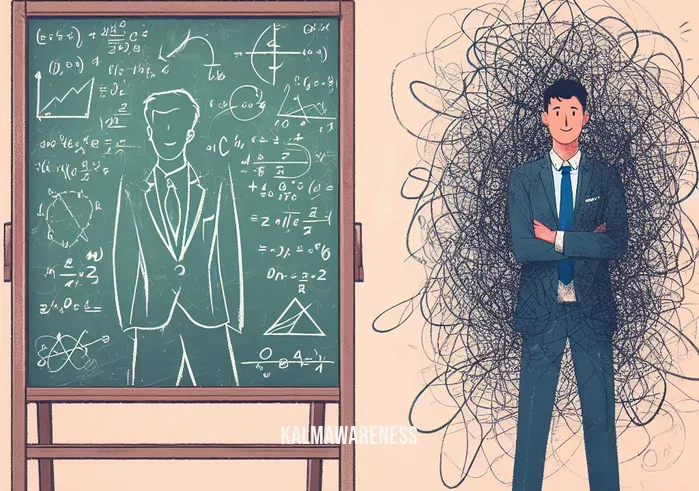
The Multifaceted Essence of Meditation Symbols
Meditation symbols aren’t mere illustrations or designs; they are keys unlocking portals to deeper understanding, mindfulness, and spirituality. While Chapter 1 introduced us to the realm of these symbols, let’s now explore their diverse forms, meanings, and the significance they hold in different meditation practices.
The Significance of Meditation Symbols in Various Cultures
Every culture and tradition has its own set of meditation symbols, each echoing distinct values, philosophies, and teachings. Symbols from mindful martial arts may differ from those seen in practices like meditation for menopause, yet they all serve the purpose of channeling focus, evoking certain emotions, and guiding the practitioner into deeper realms of consciousness. They’re not just art forms but visual tools that bridge our outer reality with our inner experiences.
A List of Popular Meditation Symbols and Their Origins
Mandala: Originating from ancient Indian traditions, this intricate geometric design symbolizes the universe and is often used to focus during meditative practices.
Lotus Flower: Widely recognized across various cultures, this symbol signifies purity, rebirth, and spiritual awakening.
Om: A sacred sound and spiritual icon in Indian religions, it signifies the essence of ultimate reality and consciousness.
Endless Knot: Found in Tibetan Buddhism, this complex geometric design represents the interconnectedness of all life.
Yin and Yang: A Chinese symbol representing the harmony of opposites and balance in the universe.
Each of these symbols carries profound meanings, aiding in meditation by serving as a visual representation of complex philosophical concepts.
Diving Into the Depths: A Table Overview
| Meditation Symbol | Associated Emotion | Primary Use in Meditation |
|---|---|---|
| Mandala | Wholeness & Unity | Concentration & Visualization |
| Lotus Flower | Purity & Enlightenment | Spiritual Awakening |
| Om | Peace & Oneness | Chanting & Deepening Awareness |
| Endless Knot | Interconnectivity | Understanding Life’s Complexities |
| Yin and Yang | Balance & Harmony | Achieving Inner Balance |
This table provides a snapshot of how each symbol aligns with specific emotions and their primary role in meditation practices.
Meditation Symbols in Contemporary Practices
In today’s fast-paced world, traditional symbols have seamlessly blended into modern practices, helping individuals navigate the challenges of contemporary life. For instance, a mindful miracle often employs age-old symbols to guide meditation sessions, enabling individuals to find solace amidst the chaos. Similarly, mindful skills have been developed, integrating these symbols to enhance the efficacy of meditation sessions, making them more relevant to current societal needs.
Expanding Horizons with Meditation Consultants
Given the vast array of symbols and their intricate meanings, many individuals seek guidance to use them effectively in their practices. Meditation consultants have thus emerged as experts, helping practitioners choose the right symbols that resonate with their personal journey, ensuring a more profound and transformative meditation experience.
As we’ve journeyed deeper into the world of meditation symbols, we’ve seen their myriad forms, the rich tapestry of their history, and their undeniable significance in guiding our spiritual and mindful pursuits. But our exploration doesn’t end here. In the next chapter, we will further traverse the paths these symbols pave, diving into their therapeutic applications, their role in holistic wellness, and much more. Continue reading to embark on this enlightening journey.
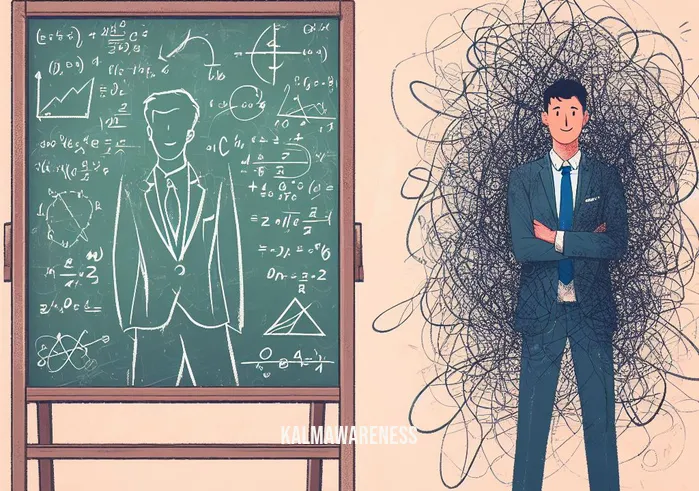
Meditation Symbols: The Lighthouse of Hope and Inspiration
In our quest to understand the multifaceted realm of meditation symbols, we’ve delved into their history, meanings, and contemporary relevance. But beyond these intellectual understandings lies an even more profound layer: the potential of these symbols to inspire hope, guide our inner journeys, and light the path during our darkest moments.
The Healing Power of Symbols
In times of turmoil, symbols offer solace. The lotus, for instance, blooms beautifully despite emerging from muddy waters, serving as a beacon of hope, signifying that we too can rise above our circumstances. Real-life stories abound where individuals have found solace in such symbols. A particularly inspiring case is the mindful martial arts community, where practitioners channel the energy of symbols to overcome personal challenges, transforming pain into power.
Echoes of Inspiration: Words That Resonate
“In the same way that a meditation symbol anchors our focus, hope anchors our soul.” – Anonymous
“Just as a candle cannot burn without fire, humans cannot live without hope and the symbols that inspire it.” – Mahatma Gandhi
“Symbols are the language of dreams, and in meditation, they become the whispers of the soul.” – Carl Jung
Each quote above not only emphasizes the importance of symbols in meditation but also underscores their power to instill hope and inspiration.
From Despair to Hope: Real-life Inspirations
Jenna, a 32-year-old marketing professional, faced an existential crisis, battling anxiety and a feeling of emptiness. While therapy provided some relief, her turning point came when she attended a penn mindfulness class. Here, Jenna was introduced to the Mandala, a meditation symbol representing the universe’s wholeness. Drawing and meditating upon the Mandala became her therapeutic escape. The symbol didn’t just represent the universe but her place within it, gradually pulling her from the clutches of despair.
Similarly, Mark, after losing his wife, found himself grappling with grief and sorrow. While attending a gratitude yoga session in Princeton, he encountered the Om symbol. This ancient symbol’s vibrations resonated deeply with him, helping him channel his grief and find a path to healing. The Om became more than a symbol; it was a lifeline connecting him to the cosmos’s rhythmic pulse, bringing solace in its sacred resonance.
Symbols: Not Just Art but a Lifeline
As seen from Jenna’s and Mark’s experiences, meditation symbols, such as those explored in mindful-, are more than artistic representations. They serve as lifelines, guiding individuals back to their center, grounding them in hope, and providing a source of continuous inspiration.
It’s no wonder then that modern platforms like mindful en español are emerging, emphasizing the universality of these symbols, transcending linguistic and cultural barriers.
Meditation symbols, with their deep-rooted history and multifaceted meanings, have proven to be more than just tools for focus. They are lighthouses, guiding lost souls, instilling hope, and inspiring countless individuals like Jenna and Mark. But the magic of these symbols doesn’t stop here. In the next chapter, we will explore the transformational journeys these symbols facilitate, delving into their therapeutic benefits, and their profound impact on holistic well-being. Join us as we continue to navigate this mesmerizing realm of symbols and their boundless potential.
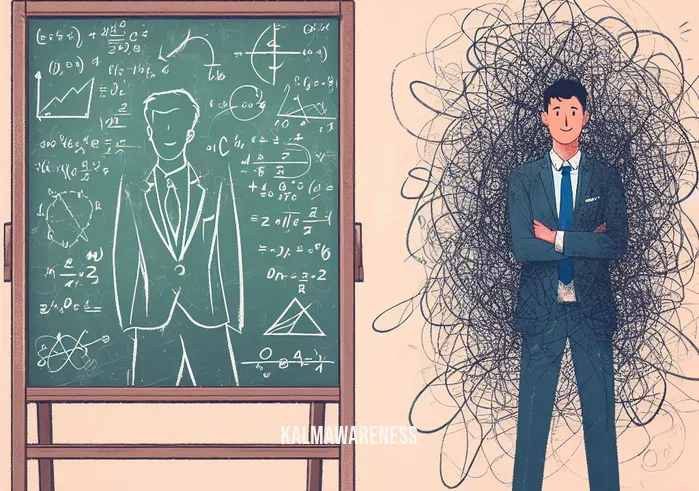
Meditation Symbols: Unraveling the Layers of Enlightenment
While our journey thus far has delved into the historical, emotional, and inspirational facets of meditation symbols, understanding these intricate tools requires a more granulated approach. Let’s peel back the layers, breaking down their complex nature into digestible insights, ultimately unlocking their transformative power.
Core Elements of Meditation Symbols
Design: Every curve, line, and shape holds meaning, reflecting deep-rooted cultural, historical, or spiritual values. For instance, the spirals in some symbols represent the universe’s cyclical nature, emphasizing the idea of constant evolution and change.
Color: In many traditions, colors convey emotions, energies, or specific chakras (energy centers). Red might symbolize grounding energy, while blue can denote communication and expression.
Origin: Symbols often stem from ancient rituals, beliefs, or mindful- practices, each telling tales of epochs gone by, guiding practitioners through time-tested wisdom.
Application: Whether used in mindful hiking to connect with nature or mindfulness books for teens to address young minds, the application showcases a symbol’s versatility.
Benefits of Integrating Symbols in Meditation
Enhanced Focus: Symbols serve as an anchor, deterring the wandering mind and channeling it towards a single point of concentration.
Deepened Understanding: Symbols, especially those with intricate designs, allow for layers of interpretation, taking the meditator on a journey of profound introspection.
Emotional Release: Certain symbols, when meditated upon, can evoke strong emotional responses, facilitating catharsis.
Cultural Connection: Symbols like those from ancient African meditation techniques root individuals in their heritage, fostering a sense of belonging and identity.
Choosing the Right Meditation Symbol
Given the array of symbols available, selecting one that resonates can be daunting. Here’s a guide to aid the process:
Understand its History: Delve into the symbol’s origin, whether it’s rooted in practices like meditation in motion or other ancient rituals.
Connect Emotionally: Meditate briefly on a symbol. Does it evoke any feelings? If it stirs something within, it’s a good sign.
Seek Guidance: Platforms like a renewed mind employee portal often have resources or experts that can guide individuals in their choice of symbols.
Integrate into Practice: Start by meditating on the chosen symbol for short durations, gradually increasing the time as one becomes more familiar.
Potential Pitfalls to Avoid
Overloading the Mind: While symbols aid meditation, using too many simultaneously can scatter focus. It’s best to stick to one or two at a time.
Misinterpretation: Each symbol has its unique significance. Misunderstanding its meaning can hinder its effectiveness in meditation.
Forcing a Connection: Not every symbol will resonate, and that’s okay. It’s essential to find those that genuinely align with one’s personal journey.
As we’ve deconstructed the meditation symbols into their core elements, their profound depth and potential become evident. These aren’t just designs; they are maps guiding us on our inner explorations. As we gear up for our final chapter, we’ll be looking at how to integrate these symbols into daily life, ensuring that their transformative power isn’t confined merely to our meditation sessions but permeates every moment of our existence. Stay with us as we culminate this enlightening journey.
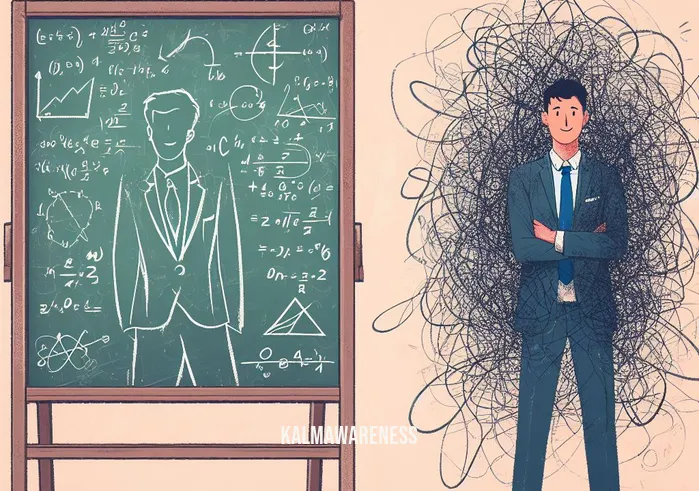
Meditation Symbols: Embarking on New Beginnings
As our enlightening voyage through the realm of meditation symbols draws to a close, we find ourselves not at an end, but at the threshold of countless new beginnings. These symbols, rich in history, emotion, and wisdom, are gateways to deeper self-awareness, profound spiritual insights, and transformational inner journeys.
Recapitulating Our Enlightened Journey
Historical Depths: We traced the ancient origins of these symbols, from the intricate Mandalas to the harmonizing Yin and Yang, realizing that these symbols are more than mere designs. They are the distilled essence of generations of spiritual wisdom.
Symbols as Beacons: Through real-life narratives, we witnessed the life-altering power of these symbols, guiding individuals like Jenna and Mark from the brink of despair to hope and healing.
A Guide to the Soul: Breaking down the symbols’ various elements, we discovered their multifaceted roles in meditation, from anchoring focus to evoking deep-seated emotions.
As we now stand, enlightened by the mindful miracle of these symbols, it’s evident that they are more than tools; they are companions on our lifelong spiritual sojourn.
Real-World Applications: Beyond Meditation
While meditation is a pivotal arena where these symbols shine, their applicability extends far beyond:
Daily Reminders: Consider incorporating these symbols into your living spaces or workstations. Let them serve as daily reminders of the peace and balance you seek.
Artistic Expressions: Embrace your creative side by sketching or painting these symbols. As you do, meditate upon their meanings, transforming art into a therapeutic activity.
Learning & Growth: Dive into platforms like meditation pleine conscience to deepen your understanding and practice.
A Heartfelt Note to Our Readers
To all who accompanied us on this introspective journey, thank you. Your quest for knowledge, understanding, and spiritual growth is commendable. Remember, each symbol, each curve, color, and line, holds a universe of meanings, waiting to be explored.
While our exploration of meditation symbols culminates here, our magazine is brimming with more insightful content. Whether you’re keen on enhancing mindful skills or exploring other spiritual realms, we have you covered. And if ever in doubt, revisiting these chapters can offer renewed clarity and insight.
In conclusion, meditation symbols, with their vastness and depth, invite us to explore, introspect, and evolve. As you continue your spiritual journey, may these symbols be your guiding stars, illuminating the path ahead. And remember, every end is a new beginning. Stay curious, stay enlightened, and until next time, happy meditating!
